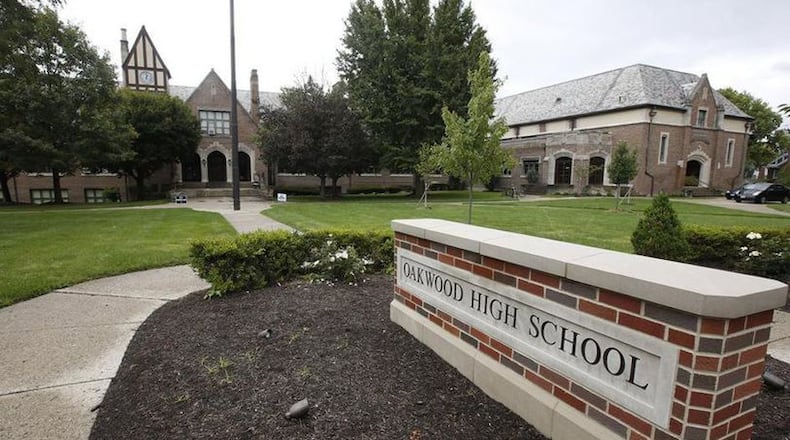Eight months ago, Ohio lawmakers passed House Bill 250 mandating that all public schools adopt a cellphone policy to reduce screentime and cellphone distractions. That policy saw local districts including Beavercreek, Centerville and Kettering clamp down on cellphone use.
Oakwood already had a policy, adopted in 2009, that allowed students to use devices before and after school, during their lunch break, in between classes and while riding in district vehicles.
The new policy goes further and prohibits elementary students from using personal devices except during after-school and extracurricular activities or while riding in school vehicles. Students in seventh through 12th grades are only allowed to use devices during lunch breaks and during after-school and extracurricular activities or while riding in school vehicles.
“Our two elementary schools, Smith and Harman, have already been instituting the practice of no devices during instructional time,” Gupta said during the April school board meeting.
A recent review by the Dayton Daily News of area school policies found most local districts already require students to keep their cellphones, personal laptops and headphones, among other devices, out of sight during the school day. Some districts, including Dayton Public and Fairborn, use Yondr pouches, which lock cellphones in a magnetic pouch during the day that students unlock with a special key.
“I recommended this policy because I believe our students will benefit from fewer distractions and more opportunities to focus, not just on their academics, but also on building relationships and engaging meaningfully with their peers,” Gupta said. “It’s about creating an environment where students can be fully present and make the most of their time at school.”
Oakwood High School senior Mannie Williams, president of the Class of 2025, started an online petition at change.org calling for the district to revoke the new policy. As of Tuesday morning, there were nearly 500 signatures.
Williams and Taylor Brown, president of the Class of 2026, signed an open letter to the school board questioning the need for the policy, which they called “well-intentioned” but “out of touch with the reality of our classroom experience” because it does not consider how students and teachers use devices for educational and practical purposes and doesn’t teach students how to responsibly use cellphones in a professional setting.
“Right now, this policy does not equip us for the real world; it shelters us from it,” the letter stated. “… Instead of imposing a blanket ban, I propose a more balanced approach: allow phones during non-instructional periods and do not ban them entirely from our school day. This is wholly compatible with the expectation that devices be off during class. Let teachers continue making decisions for their classrooms, as they have for so many years, and which has worked."
The letter and petition also said the policy lacks input from students.
However, Gupta said the district earlier this year began closely studying the effects of cellphones and other personal communication devices and took time to engage with staff, families and students.
“Through those conversations and our research, it became clear that limiting cellphone use during the school day could help students be more present, both academically and socially,” he said.
Gupta said he understands that many students and parents may feel the new policy is too restrictive. School leaders from other districts that implemented similar policies also reported some early resistance, he said.
“But what followed was overwhelmingly positive feedback — especially from staff and parents — about students being more focused, more engaged in class and less distracted during the school day," Gupta said.
Ohio Gov. Mike DeWine is backing a new bill, Senate Bill 158, that as proposed would require public districts to adopt an all-out prohibition on student cellphone use, with exceptions for students who have a health concern that needs monitoring.
Gupta said the district does not have the full details of the proposal and has not had formal conversations about it, so he declined to say whether he would support it.
In a statement to the Dayton Daily News, Ohio Education Association President Scott DiMauro said his union “appreciates the opportunity to have thoughtful discussions around what our students need to succeed in Ohio’s public schools, including ways to reduce the distractions that cellphones can cause in our classrooms.”
Staff writer Eileen McClory contributed to this report.
About the Author

